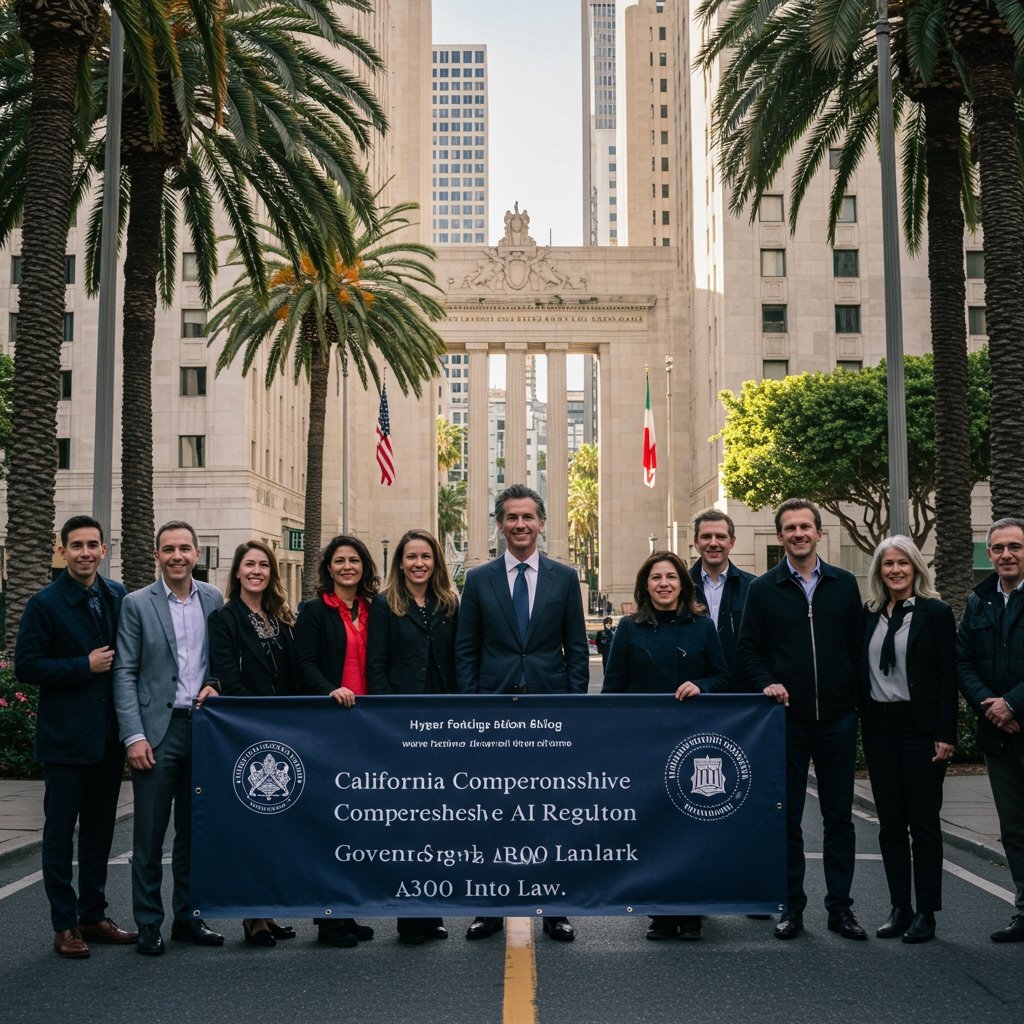California Establishes Nation’s First Comprehensive AI Regulatory Framework with AB 300
Sacramento, California – In a move poised to reshape the landscape of artificial intelligence development and deployment, California Governor Gavin Newsom on February 10, 2025, officially signed Assembly Bill 300 (AB 300) into law. This landmark legislation marks the state’s decisive entry into the complex realm of AI governance, establishing what is being hailed as the nation’s first comprehensive regulatory framework specifically tailored to artificial intelligence. The bill is scheduled to take effect on July 1, 2025, giving companies and regulators several months to prepare for its stringent new requirements.
Key Provisions of AB 300
AB 300 introduces a series of significant mandates aimed at increasing accountability and mitigating risks associated with advanced AI systems. At its core, the bill imposes strict transparency rules, a central pillar designed to pull back the curtain on how powerful AI models are built and operate. Specifically, the legislation mandates the disclosure of training data for large models. This requirement aims to address concerns about bias, copyright infringement, and the use of potentially harmful or unethically sourced information in training datasets that underpin many cutting-edge AI applications. By requiring developers to reveal information about the data used to train these models, the bill seeks to enable researchers, regulators, and the public to better understand their capabilities, limitations, and potential societal impacts.
Beyond transparency in training data, AB 300 also introduces requirements for independent safety audits for high-risk AI applications. Recognizing that certain uses of AI carry greater potential for societal harm – such as applications in hiring, loan applications, criminal justice, or healthcare – the bill necessitates rigorous, third-party evaluations of these systems before and during their deployment. The specifics of what constitutes “high-risk” are further detailed within the legislative text, often tied to applications that could significantly impact individuals’ rights, safety, or access to critical services. These audits are intended to identify potential vulnerabilities, biases, and failure modes, ensuring that high-stakes AI systems function as intended and do not perpetuate or create new forms of discrimination or harm.
Oversight of these new regulations, including the management of transparency disclosures and the certification process for independent auditors, will fall under the purview of a new state board. This board is tasked with developing detailed implementation guidelines, enforcing compliance, and adapting the regulations as AI technology continues to evolve rapidly. The creation of a dedicated regulatory body underscores California’s commitment to proactive governance in this fast-moving field, aiming to build necessary expertise within the state government to keep pace with technological advancements.
Stakeholder Reactions: Support and Opposition
The passage of AB 300 was met with diverse reactions from various stakeholders. Consumer advocates emerged as strong proponents of the bill, lauding it as a crucial step towards protecting public interests in the age of AI. Supporters argued that mandatory transparency and independent audits are essential safeguards against opaque algorithms that could otherwise lead to unfair outcomes or societal instability. They emphasized the need for proactive regulation to ensure that AI development prioritizes safety, fairness, and accountability over unrestrained innovation speed, framing the bill as a victory for public protection.
Conversely, the legislation faced significant opposition from major tech firms, including industry giants like Google and Meta. These companies, many of which are headquartered in California’s Silicon Valley and are at the forefront of AI research and development, expressed concerns that the bill’s requirements could impose burdensome compliance costs and potentially stifle innovation. Their arguments often centered on the proprietary nature of training data, the complexity and expense of independent audits for rapidly iterating models, and the potential for state-level regulations to create a fragmented regulatory environment that hinders national or even global competitiveness. Critics from the tech sector voiced fears that the stringent rules might encourage companies to relocate AI development or deployment activities outside of California.
Projected Impact on Silicon Valley
Industry experts have widely projected that the implementation of AB 300 will significantly impact Silicon Valley AI development pipelines and compliance budgets. The mandate for training data disclosure will require companies to establish new internal processes for tracking, documenting, and potentially curating the vast datasets used to train large models. This could involve substantial investments in data governance infrastructure and personnel. Furthermore, the requirement for independent safety audits for high-risk applications will add a new layer of expense and complexity to the development lifecycle. Companies will need to engage certified third-party auditors, potentially lengthening development timelines and increasing overall project costs. These projected impacts highlight the tangible consequences of AB 300 for the businesses operating within California’s vibrant but now more regulated tech ecosystem.
Setting a National Precedent
Governor Newsom and legislative proponents have stated that a key objective of AB 300 is to set a precedent for state-level AI governance. In the absence of comprehensive federal AI regulation, states are increasingly exploring ways to address the challenges posed by AI independently. California, as the nation’s technology hub, holds significant influence, and its regulatory decisions often inspire or inform policies in other states and even at the federal level. AB 300’s framework of mandated transparency, independent audits, and dedicated oversight provides a potential model for other jurisdictions grappling with how to effectively regulate AI while fostering innovation. The success or challenges encountered during AB 300’s implementation will likely be closely watched nationwide.
Conclusion
The signing of AB 300 represents a pivotal moment in the regulation of artificial intelligence in the United States. By enacting the first comprehensive state-level framework, California is taking a definitive step to address growing concerns about AI safety, transparency, and accountability. While supported by consumer advocates seeking greater public protection, the bill presents notable challenges for the tech industry, particularly impacting development practices and compliance costs in Silicon Valley. As AB 300 prepares to take effect on July 1, 2025, its implementation will test the balance between fostering technological advancement and establishing necessary guardrails for the responsible deployment of artificial intelligence, potentially shaping the future of AI regulation across the country.


















